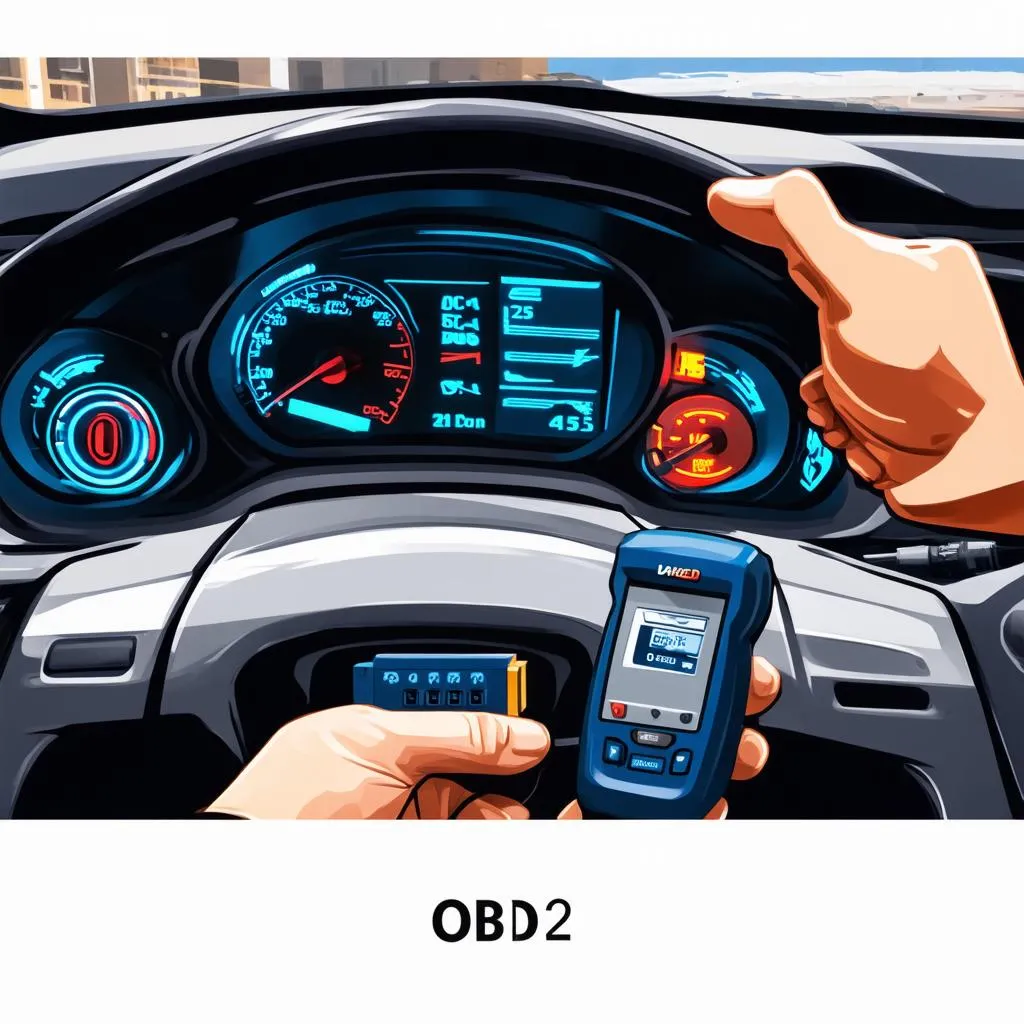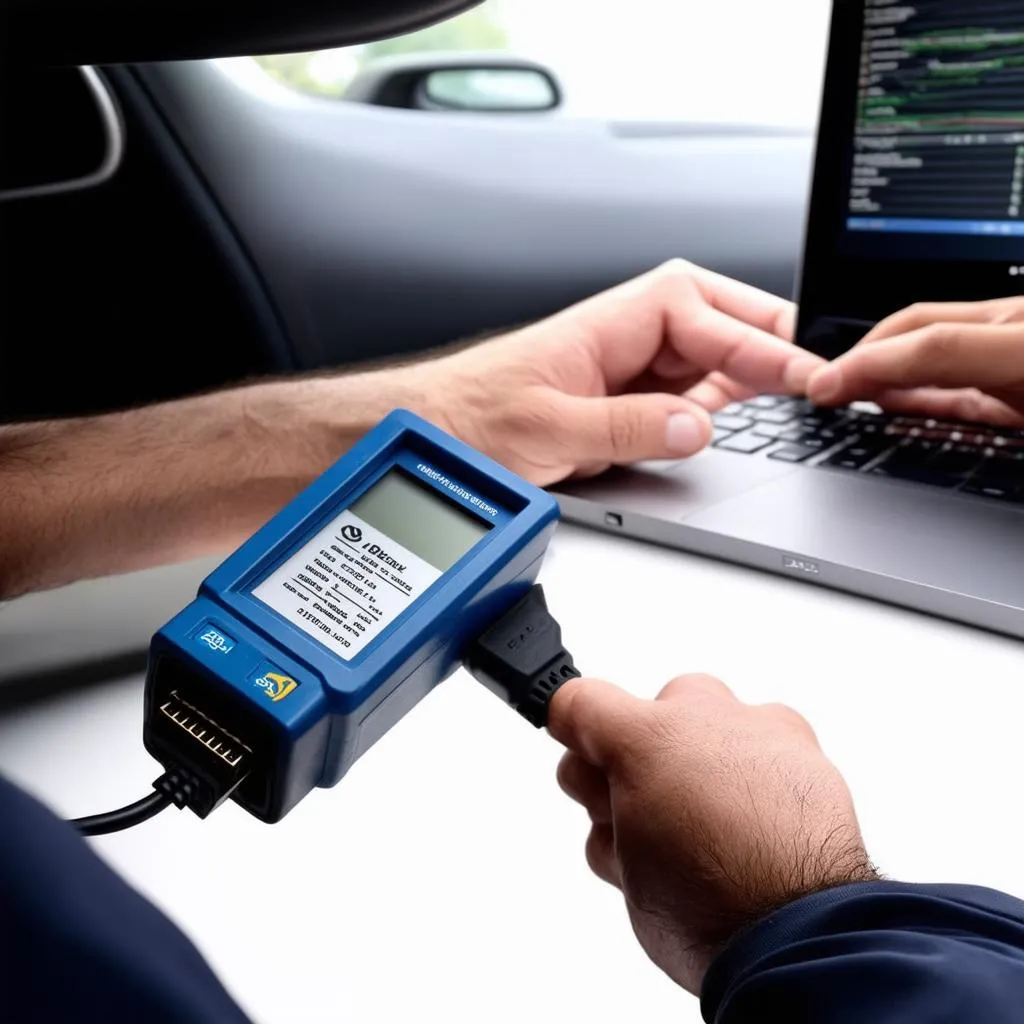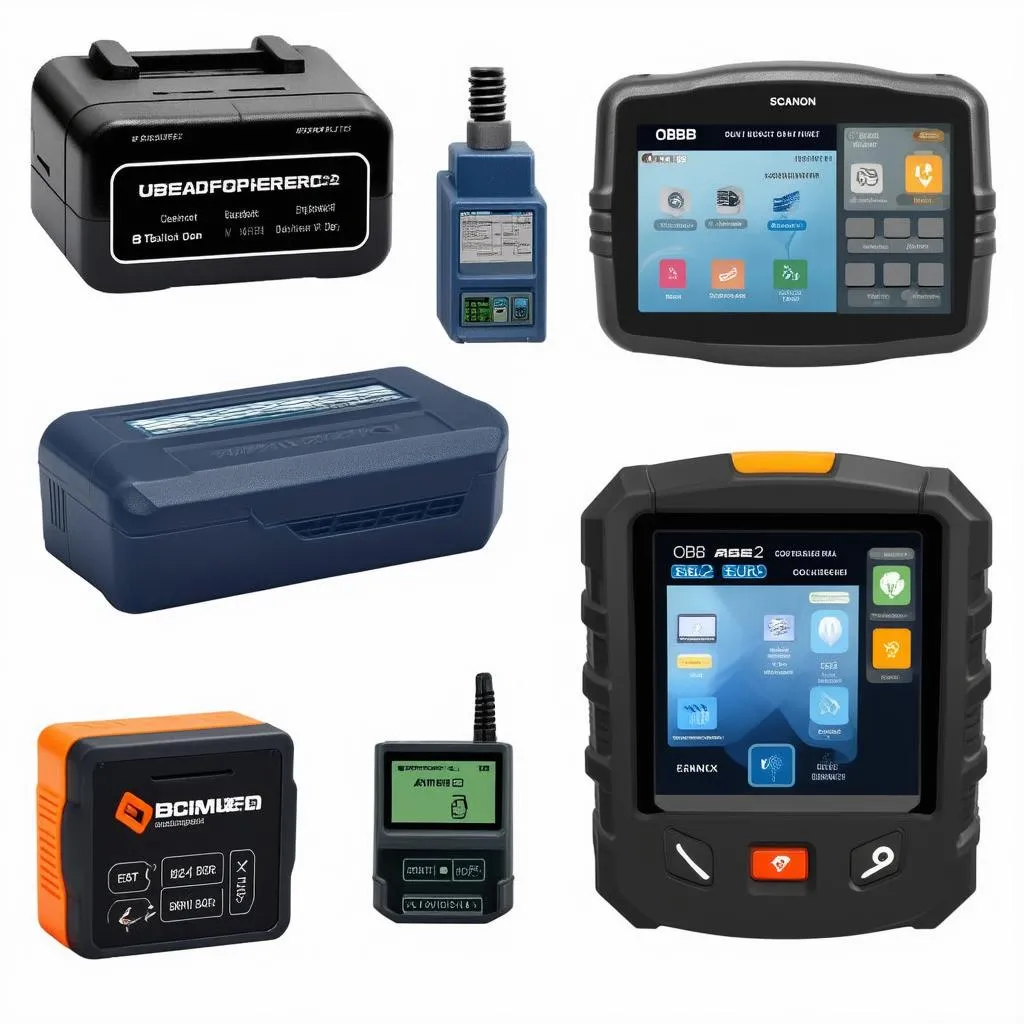Have you ever wondered what those cryptic codes flashing on your car’s dashboard mean? Or how to diagnose a problem without taking your vehicle to a mechanic? The answer lies in understanding the OBD2 diagnostic modes, a powerful tool for both professional mechanics and car enthusiasts alike.
What are OBD2 Diagnostic Modes?
OBD2, short for On-Board Diagnostics 2, is a standardized system that helps diagnose and troubleshoot issues in modern vehicles. It’s like a built-in doctor for your car, providing valuable information about its health. The heart of OBD2 is its 10 diagnostic modes, each offering a unique insight into the vehicle’s operations.
The 10 OBD2 Diagnostic Modes Explained:
Mode 01: Current Data
Imagine you’re checking your car’s vital signs. Mode 01 gives you real-time data on important parameters like engine speed, coolant temperature, fuel pressure, and more. It’s like having a window into your car’s engine, providing insights into its current state.
Mode 02: Freeze Frame Data
Ever wondered what your car was doing the last time the check engine light came on? Mode 02 captures and stores “freeze frame” data, a snapshot of the vehicle’s conditions when a fault occurs. It’s like a time machine for your car, revealing crucial information to help pinpoint the problem.
Mode 03: Emission-Related Diagnostic Trouble Codes (DTCs)
Think of DTCs as error messages from your car. Mode 03 displays a list of current DTCs related to emissions, giving you a clear picture of any problems affecting your car’s environmental performance.
Mode 04: Pending DTCs
Ever felt a premonition about a problem? Mode 04 reveals pending DTCs, those pesky errors that haven’t yet triggered the check engine light. It’s like a warning system, giving you a heads-up about potential issues before they become major problems.
Mode 05: Oxygen Sensor Test Results
Oxygen sensors are crucial for regulating fuel efficiency and emissions. Mode 05 provides insights into their performance, revealing whether they are working optimally and if any adjustments are needed.
Mode 06: On-Board Monitoring Test Results
Imagine your car constantly checking its own health. Mode 06 reports the results of on-board monitoring tests, providing a comprehensive overview of its overall performance and identifying any potential areas of concern.
Mode 07: Pending DTCs
Similar to Mode 04, Mode 07 displays pending DTCs related to emissions. This information can be helpful in identifying potential issues early on and preventing them from escalating.
Mode 08: Control Module Information
Think of it as your car’s ID card. Mode 08 provides information about the vehicle’s control modules, including their identification numbers, software version, and calibration data. It’s like getting a glimpse into your car’s digital brain.
Mode 09: Vehicle Information
Mode 09 presents vehicle-specific information such as VIN (Vehicle Identification Number), calibration data, and other crucial data points. This information can be valuable for troubleshooting and maintenance tasks.
Mode 10: OBD Standards Information
Mode 10 reveals the OBD standards supported by your vehicle, ensuring compatibility with diagnostic tools and ensuring you’re using the right equipment.
 obd2-diagnostic-modes
obd2-diagnostic-modes
Why Understanding OBD2 Diagnostic Modes Matters:
OBD2 diagnostic modes are not just for professionals. Whether you’re a car enthusiast, a DIY mechanic, or simply someone who wants to understand their vehicle better, these modes offer a wealth of information.
Benefits of Knowing OBD2 Diagnostic Modes:
- Early Detection of Problems: By monitoring pending DTCs and other vital data, you can address issues before they escalate into major repairs.
- Cost Savings: Catching problems early often means less costly repairs.
- Increased Vehicle Performance: By understanding your car’s health and addressing any problems promptly, you can optimize its performance and fuel efficiency.
- Empowerment: Being able to diagnose and troubleshoot minor issues yourself can save you time and money, giving you a sense of control over your vehicle’s maintenance.
- Peace of Mind: Knowing how to interpret the information your car is providing can offer peace of mind, especially when traveling long distances or in unfamiliar environments.
Using OBD2 Diagnostic Tools:
To access OBD2 diagnostic modes, you’ll need a compatible OBD2 scanner. These devices, available online and at auto parts stores, connect to the OBD2 port located under your car’s dashboard. They allow you to read and interpret the information from your car’s computer system.
 obd2-scanner
obd2-scanner
Frequently Asked Questions:
Q: How do I choose the right OBD2 scanner?
A: Choose a scanner compatible with your vehicle’s year and model. Many scanners are available, ranging from basic code readers to more advanced diagnostic tools.
Q: What are some common OBD2 trouble codes and their meanings?
A: Numerous trouble codes exist. Consult a comprehensive online database or a dedicated OBD2 troubleshooting guide to understand the meanings of specific codes.
Q: Are OBD2 scanners compatible with all cars?
A: OBD2 is a standardized system, so most vehicles manufactured after 1996 are compatible. However, older vehicles may have different diagnostic systems.
Q: Do I need to be a mechanic to use an OBD2 scanner?
A: No! While a mechanical background is helpful, many scanners are user-friendly and come with comprehensive instructions.
Q: Can I clear OBD2 codes myself?
A: You can clear codes, but be careful! Clearing a code without addressing the underlying issue may lead to more serious problems.
Finding the Right OBD2 Tool for Your Needs:
 obd2-tools
obd2-tools
Conclusion:
Understanding OBD2 diagnostic modes can empower you to take control of your vehicle’s maintenance and ensure it stays running smoothly. With the right tools and knowledge, you can unlock the hidden information your car holds, preventing costly repairs, maximizing performance, and ultimately extending the life of your vehicle. Remember, preventative maintenance is key, and knowing your car’s health is the first step.
Have any questions about OBD2 diagnostic modes or need help choosing the right tool? Contact our team of experts for personalized advice and support! We’re here to help you navigate the world of car diagnostics and keep your vehicle running smoothly.
Reach out to us at WhatsApp: +84767531508 for 24/7 support!